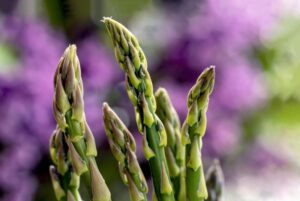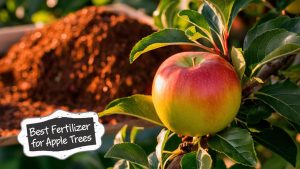In this comprehensive guide, we’ll explore everything you need to know about choosing the perfect fertilizer for your new lawn, from understanding soil health to navigating different types of fertilizers.
Fertilizer For A New Lawn
| Image | Name | Rating | Shop |
|---|---|---|---|
 | Turfstart |  | |
 | Thicker Lawn Fertilizer |  | |
 | Scotts Turf Builder Starter Food |  |
Turfstart
The Andersons Premium New Lawn Starter 20-27-5 Fertilizer is a great choice for new lawns that need a boost to get established. This fertilizer is specifically designed for newly seeded or sodded areas, providing an optimal balance of nitrogen, phosphorus, potassium, and micro-nutrients to promote healthy growth.
This product is particularly well-suited for fall and spring applications when lawns are most active. The added iron in this formula gives the lawn an extra burst of green color, making it a great option if you want your new lawn to look its best quickly. With coverage area of up to 5,000 sq ft and a generous 18 lb bag size, this fertilizer is a convenient and effective solution for lawns of all sizes.
Thicker Lawn Fertilizer
This product, Scotts Turf Builder Starter Fertilizer for New Grass, is a strong choice for those looking to jumpstart their new lawn.
With its unique fertilizer ratio of 24-25-4, this starter fertilizer provides the necessary nutrients for your developing lawn. It effectively grows grass 70% thicker and 35% quicker compared to unfed lawns, and can also be used on existing ones if you plan on reseeding or repairing a damaged area. Additionally, its versatility makes it suitable for various types of grass, including those planted through seeds, sod, or plugs.
Scotts Turf Builder Starter Food for New Grass Ready-Spray
For a newly seeded lawn, you’ll want a fertilizer that encourages rapid growth and establishes a healthy root system quickly. The Scotts Turf Builder Starter Food for New Grass Ready-Spray is an effective solution to achieve these goals. This starter food contains the necessary nutrients to promote better seeding results, resulting in a lush and green lawn.
This ready-to-spray fertilizer can be applied at any time when planting new grass, whether it’s starting from scratch, reseeding a patchy area, or laying down fresh sod. It’s formulated to be compatible with all types of grass, making it suitable for varied yard conditions. With one 32 oz bottle covering approximately 600 square feet, this product is ideal for smaller lawns or targeted applications around the house.
Lawn Starter Fertilizer
This GreenView Spring or Fall Lawn Starter Fertilizer is a top choice for those looking to create a lush new lawn. Its 48 lb. bag size makes it capable of covering up to 15,000 sq. ft., perfect for large lawns or for seeding a new one.
As its name suggests, this product can be used either in the spring or fall, making it versatile and convenient to incorporate into your lawn care routine at any time of year. Additionally, it provides an optimal balance of nutrients for seedlings and young grass to grow strong and healthy – making it a valuable resource for anyone looking to promote healthy growth from the very start.
Nitrogen Blend for Turf Grass Nutrition
For a new lawn, it’s essential to provide high-quality nutrients for optimal growth. This Premium Liquid Nitrogen Starter Fertilizer 16-21-2 is an excellent choice for achieving lush, dark green grass. The slow-release formula ensures consistent and rapid nutrient release over an extended period.
This liquid fertilizer is specifically designed for new lawns, seeds, sod, or spring grass. With a nitrogen-rich blend of 16% Nitrogen -21% Phosphates – 2% Potash, it provides the necessary nutrients for rapid growth and development. Additionally, its easy-to-apply design makes usage convenient with various sprayer options available.
How To Choose a Fertilizer For A New Lawn
Establishing a new lawn is an exciting endeavor, whether you’re creating a fresh space in your backyard or restoring an area that needs some love. One of the most crucial factors in ensuring the success of your lawn is selecting the right fertilizer.
Understanding Soil Health
Before diving into the world of fertilizers, it’s essential to understand the foundation of your lawn: the soil. Healthy soil is the cornerstone of a lush, green lawn. Conduct a soil test to determine pH levels, nutrient content, and soil texture. Testing kits are available at garden centers, or you can send samples to a local extension office for professional analysis.
The Importance of Soil Testing
Soil testing allows you to identify what nutrients your soil may be lacking. For instance, a deficiency in nitrogen or phosphorus could explain why previous attempts at growing grass failed. Understanding your soil’s composition helps you pinpoint the right fertilizer formula tailored to your lawn’s needs, promoting a more robust and vibrant growth.
Nutrient Basics
Once you have your soil tested, it’s time to get acquainted with the essential nutrients that play pivotal roles in grass growth: nitrogen (N), phosphorus (P), and potassium (K). These are the primary macronutrients plants require.
Nitrogen (N)
Nitrogen is the nutrient responsible for leafy, green growth. It’s crucial during the establishment phase of grass because it helps the plants develop strong foliage, which ultimately supports photosynthesis and root development.
Phosphorus (P)
Phosphorus plays a significant role in root development and flower formation. It helps grass establish strong roots, making it especially important when starting a new lawn. In areas where soil is deficient in phosphorus, a fertilization strategy that includes this nutrient will lead to a more vigorous and resilient lawn.
Potassium (K)
Potassium enhances plant vigor and drought resistance. It helps grass tolerate heat and cold, making it an essential part of a lawn’s health, especially as it is established. A balanced supply of potassium also aids in disease resistance, keeping your new lawn resilient against environmental stressors.
Understanding Fertilizer Labels
Navigating fertilizer labels can be daunting due to the numbers and terms used. Generally, fertilizer labels display a three-number ratio that signifies the amounts of N-P-K (Nitrogen-Phosphorus-Potassium) contained within. For instance, a fertilizer labeled as 10-20-10 has ten percent nitrogen, twenty percent phosphorus, and ten percent potassium. When selecting a fertilizer, understanding how these numbers correspond to your soil needs is vital.
N-P-K Ratios Explained
When learning how to choose a fertilizer, it’s essential to match the N-P-K ratio to the growth stage of your grass. Newly seeded lawns benefit most from fertilizers with higher phosphorus levels, typically between 20 and 30%, while established lawns may require higher nitrogen levels for more lush growth.
Types of Fertilizers
The market is flooded with various fertilizers, and understanding the differences can greatly aid in your decision-making process. Generally, fertilizers fall into two categories: organic and synthetic.
Organic Fertilizers
Organic fertilizers come from natural sources and release nutrients slowly, promoting sustainable lawn health. Common types include:
Compost: Rich in nutrients and beneficial microbes, compost improves soil structure and fertility.
Manure: Animal manure is loaded with nutrients, but it should be well-composted to avoid burning your grass.
Bone Meal: This is an excellent phosphorus source, promoting robust root development.
Organic fertilizers are especially beneficial for new lawns as they help improve soil health over time without the risk of nutrient leaching.
Synthetic Fertilizers
On the other hand, synthetic fertilizers provide a quick nutrient boost and are often more concentrated. They can be tailored to specific nutrient needs, allowing for rapid adjustments based on your lawn’s requirements. However, they can also lead to over-fertilization if not applied correctly.
Timing Is Everything
Another critical factor in choosing the right fertilizer is timing. The best time to fertilize a new lawn varies depending on the season, the type of grass you’re planting, and your location.
Seasonal Considerations
Most grass types can be categorized as cool-season or warm-season grass. Cool-season grasses (such as Kentucky bluegrass and fescue) thrive in cooler temperatures and benefit from fertilization in early spring and fall. Conversely, warm-season grasses (like Bermuda and zoysia) should ideally be fertilized in late spring and summer when growth is at its peak.
First Application Timing
When planting a new lawn, apply fertilizer during or immediately after seeding. This initial application provides the necessary nutrients for germinating seeds. However, avoid excessive nitrogen at this stage to prevent “burning” the seedlings.
Slow-Release vs. Fast-Release
Understanding the difference between slow-release and fast-release fertilizers can further refine your choice.
Slow-Release Fertilizers
Slow-release fertilizers are designed to provide a steady supply of nutrients over an extended period. They’re excellent options for new lawns, as they promote steady growth without overwhelming the grass. These fertilizers reduce the risks of leaching and nutrient runoff, making them an environmentally friendly choice.
Fast-Release Fertilizers
Fast-release fertilizers deliver quick results and are often used to provide immediate nutrients when specific deficiencies are identified. However, they must be applied carefully, as their rapid effect can lead to spikes in growth that the grass may struggle to sustain.
Applying Fertilizer Correctly
Applying fertilizer correctly is just as important as choosing the right product. Over-application can lead to nutrient runoff into waterways, harming the environment, while under-application can leave your lawn lacking essential nutrients.
Recommended Practices
Spread Evenly: Use a broadcast spreader for even application, which helps prevent uneven growth and patchy areas in your lawn.
Watering: After fertilizing, water the area to help nutrients penetrate the soil effectively.
Follow Instructions: Always refer to the package instructions for the correct application rates to avoid both nutrient deficiency and lawn damage.
Environmental Considerations
As we focus on bettering our lawns, it’s crucial to consider the environmental impact of our choices. Over-fertilizing not only wastes money but also harms local ecosystems through nutrient runoff. Seeking organic or slow-release options and employing proper application techniques can mitigate these effects.
Sustainable Lawn Care Practices
Engaging in sustainable lawn care goes hand-in-hand with thoughtful fertilizer selection. Practices such as aerating the lawn, mulching grass clippings, and implementing a diverse planting scheme can improve soil health and reduce the need for excessive fertilizers.
Frequently Asked Questions
As you embark on this journey to create a lush, green lawn, you may have additional questions. Here are some frequently asked queries regarding fertilizer selection:
How often should I fertilize my new lawn?
New lawns typically need fertilization at least twice during the growing season. A general rule of thumb is to fertilize in the spring and again in late summer or early fall, depending on your grass type.
Can I use leftover fertilizer from last year?
Using leftover fertilizer is possible, but ensure that it’s still suitable for your current lawn conditions. Analyze the N-P-K ratio and expiration date to ensure its effectiveness.
How do I know if my lawn needs fertilization?
Signs that your lawn may need fertilizing include slow growth, paler color, or increased weed presence. Performing a soil test is a reliable method to ascertain nutrient levels that might require attention.
Conclusion
Choosing the right fertilizer for your new lawn is a foundational step in the journey to a vibrant outdoor space. By understanding your soil’s needs, the role of different nutrients, types of fertilizers, and the timing and method of application, you can create a thriving lawn that stands the test of time.







